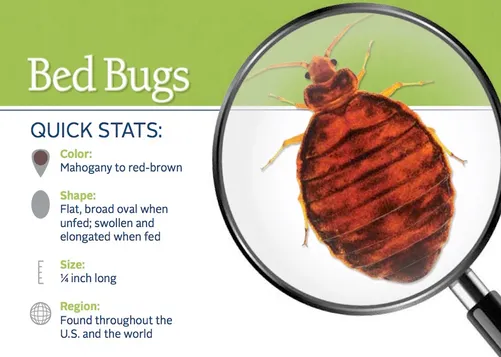Bed Bugs
|
Bed bugs are parasitic insects that feed exclusively on blood. The name bed bug derives from the preferred habitat of warm houses, especially near or inside beds and bedding. A number of adverse health effects may result from bed bug bites, including skin rashes, psychological effects and allergic symptoms. Bed bugs are not known to transmit any pathogens. Adult bed bugs are light brown to reddish-brown, flat, oval and have no hind wings. Bed bugs have segmented abdomens with microscopic hairs that give them a banded appearance. Adults grow to 4-5mm long and 1.5-3mm wide. Bed bugs can survive a wide range of temperatures and atmospheric conditions. Below 61°F, adults enter semi-hibernation and can survive longer; they can survive for at least five days at 14°F, but die after 15 minutes of exposure to -26°F. Common commercial and residential freezers reach temperatures low enough to kill most life stages of bed bugs, with 95% mortality after 3 days at 10°F. |
 |
|
Resources |
For any questions:Sarah Raifordsraiford@lbphd.ne.gov |


